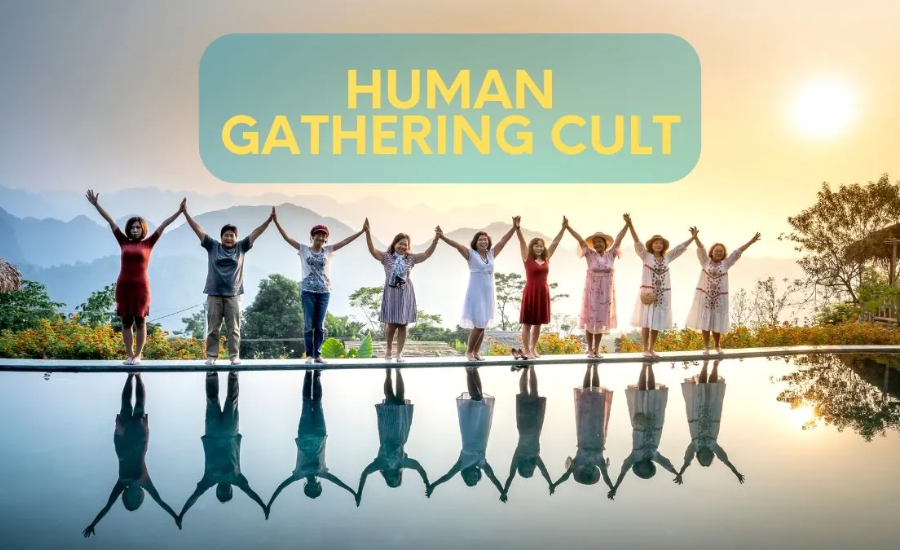Human gathering cults have fascinated and worried people for a long time. These groups are often led by charismatic leaders who attract followers looking for community, purpose, or spiritual guidance. However, behind their friendly appearance, there is often a darker reality of manipulation and control. Cults prey on people’s vulnerabilities, such as loneliness and trauma, using clever techniques to draw in and keep members. Leaders promise a sense of belonging and purpose, making followers feel like they have found their place.
Sadly, this feeling of belonging comes at a high cost. Members often become victims of intense psychological manipulation, losing their independence and ability to think critically. This can strain or even break relationships with family and friends outside the group. In extreme cases, cults have been linked to violent acts, including mass suicides and attacks, showing just how dangerous they can be.
Understanding how cults work is important for protecting vulnerable people. It’s crucial to raise awareness about the signs and dangers of cult involvement and to develop ways to help those who leave these groups. By exposing the manipulative practices of cults, we can create a more informed society that protects its members from exploitation and helps people find community and purpose in healthier, more supportive environments.
What Is a Human Gathering Cult?
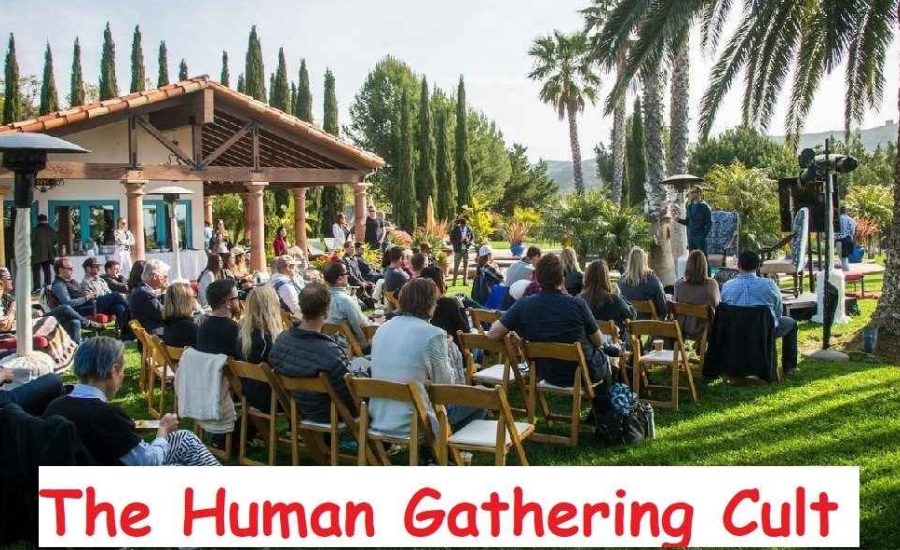
A “Human Gathering Cult” refers to a group or community of people who come together, often regularly, for shared rituals, ceremonies, or events. These gatherings are based on common beliefs, values, or interests that bind the members together. Such groups are typically characterized by a strong sense of community and belonging. The activities within these cults are often structured and organized, providing a sense of order and purpose for their members. There is usually a clear hierarchy of leadership that guides the group’s practices and ideologies.
The term “cult” in this context does not necessarily carry a negative meaning. Instead, it simply denotes a group with distinct practices and beliefs that set them apart from the mainstream. These cults can offer their members a unique sense of identity and purpose, fulfilling their need for connection and understanding. While the word “cult” often brings to mind negative connotations of manipulation and control, it is important to recognize that not all human gathering cults operate in this manner. Some may provide a positive and supportive environment for their members, fostering a sense of community and shared goals.
In essence, human gathering cults are about creating a close-knit community where individuals can find like-minded people who share their values and interests. These groups offer a space for shared experiences and mutual support, helping members to feel connected and understood in a way that might be difficult to find elsewhere. Understanding these groups in a broader, more nuanced way allows us to appreciate the variety of human experiences and the different ways people seek connection and purpose in their lives.
History And Origins Of Human Gathering Cult
The concept of human gathering cults has ancient roots, tracing back to the dawn of civilization. Throughout history, humans have formed groups to celebrate, worship, and share communal experiences, laying the foundation for various types of gatherings.
- Tribal Gatherings: Early human societies relied on tribal gatherings to mark significant events such as seasonal changes, successful hunts, and rites of passage. These gatherings were essential for fostering unity and identity among tribe members, contributing to their survival and cohesion.
- Religious Assemblies: As civilizations developed, so did the complexity of communal gatherings. Ancient societies in Mesopotamia, Egypt, and Greece organized elaborate religious ceremonies and festivals dedicated to their deities. These events served not only as spiritual rituals but also as important social and cultural occasions, reinforcing community bonds.
- Mystery Cults: In ancient Greece and Rome, mystery religions like the Eleusinian Mysteries emerged, offering initiation into secretive knowledge and rites. These cults provided followers with profound spiritual experiences and a sense of belonging to an exclusive community, marking significant spiritual transformations for initiates.
These early examples illustrate the enduring human need for connection, spiritual fulfillment, and shared identity through communal gatherings.
Characteristics Of Cults
Cults exhibit distinct characteristics that set them apart from mainstream groups. These traits define their organizational structure and dynamics:
- Charismatic Leadership: Cults are typically centered around a charismatic leader who exerts considerable influence over members. This leader often possesses persuasive abilities or a magnetic personality that attracts and retains followers.
- Isolation and Control: Cults frequently isolate members from external influences, tightly controlling their access to information, relationships, and resources. This isolation is intended to reinforce group cohesion and dependency on the cult’s leadership.
- Belief System: Cults adhere to a specific belief system or ideology that forms the core of their identity. This system provides structure and purpose for members, shaping their worldview and guiding their behavior within the group.
- Group Dynamics: Within cults, group dynamics are characterized by intense loyalty, conformity, and obedience to authority figures. Members often adhere strictly to group norms and rituals, fostering a tightly-knit community bound by shared beliefs and practices.
These characteristics illustrate how cults operate, emphasizing the influence of leadership, the enforcement of isolation, the centrality of belief systems, and the dynamics of group conformity. Understanding these traits is crucial for recognizing and addressing the complexities of cult behavior and its impact on individuals and society.
Why Did Human Gathering Start?
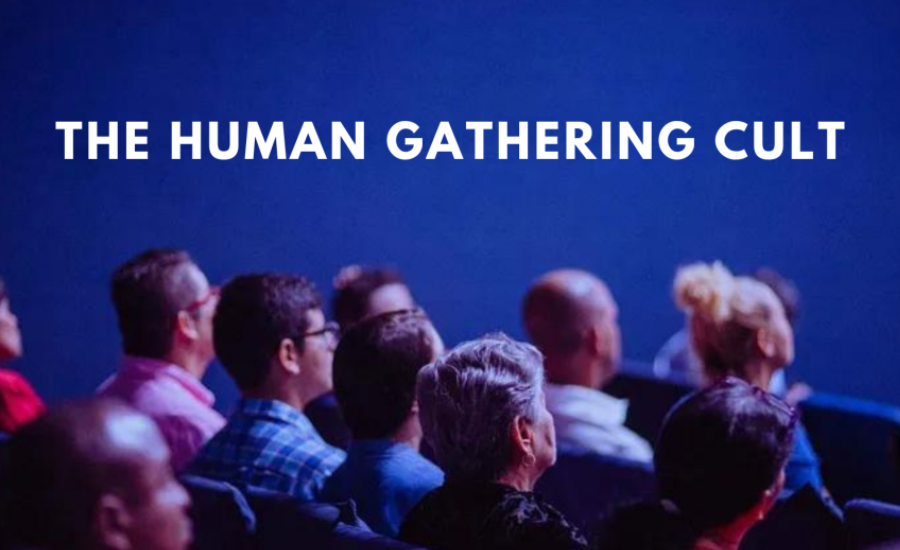
The Human Gathering began with a clear recognition of a fundamental need: the need for genuine connections. Despite the plethora of conferences and networking events attended by successful founders, executives, and well-connected individuals, there was a pervasive sense of something missing. The founders of The Human Gathering identified this gap and set out to create something distinctively different.
While success remains a significant pursuit for many, driving their aspirations in both personal and professional realms, the founders understood that traditional networks and conferences often prioritize achievement without fully addressing the deeper need for authentic human connection. They saw an opportunity to establish a platform where success could be intertwined with meaningful relationships and a genuine sense of community.
In essence, The Human Gathering was born from a desire to offer a space where individuals not only strive for personal and professional success but also seek to foster real, honest connections that enrich their lives and contribute positively to the world around them.
Where The Human Gathering comes In?

The Human Gathering stands out by prioritizing authenticity, honesty, and genuine connections. Unlike many other groups focused solely on success or achievement, The Human Gathering emphasizes creating a community of individuals dedicated to improving the world and fostering openness among its members.
Before admitting new members, The Human Gathering places a strong emphasis on evaluating their integrity, trustworthiness, and honesty. This careful screening process ensures that everyone within the community feels a sense of belonging and mutual trust.
While other networks and conferences may prioritize showcasing success without necessarily vetting the character of their members, The Human Gathering takes a different approach. It strives to cultivate meaningful relationships and sincere connections among its members, aiming not only to build friendships but also to collectively contribute to positive change in society.
Case Studies of Notable Human-Gathering Cults
Certainly, there are case studies of notable cults associated with tragic events in history:
1. Heaven’s Gate: The Tragic Pursuit Of Salvation
Founded by Marshall Applewhite and Bonnie Nettles, Heaven’s Gate believed in an impending “recycling” of Earth and offered salvation by leaving their physical bodies to ascend to a higher realm. In 1997, 39 members tragically died by mass suicide in hopes of boarding an extraterrestrial spacecraft they believed was trailing the Hale-Bopp comet.
2. Jonestown: A Mass Tragedy in Guyana
Led by Jim Jones in Guyana, Jonestown was originally known as the Peoples Temple Agricultural Project. Concerns over exposure and legal issues culminated in the tragic deaths of over 900 cult members in a mass murder-suicide in 1978. This event shocked the world and remained one of the largest losses of American civilian life in a deliberate act until September 11, 2001.
3. The Manson Family: Charisma Turned Deadly
Under the leadership of Charles Manson, the Manson Family attracted disaffected young people in the late 1960s with Manson’s charismatic persona and apocalyptic visions. The cult committed several brutal murders, including actress Sharon Tate and others, as part of Manson’s distorted goals and beliefs.
These cases highlight the devastating consequences that can arise from charismatic leaders exploiting vulnerable followers for their own delusional ideologies, resulting in profound tragedies and loss of life.
Membership And Initiation In The Human Gathering Cult
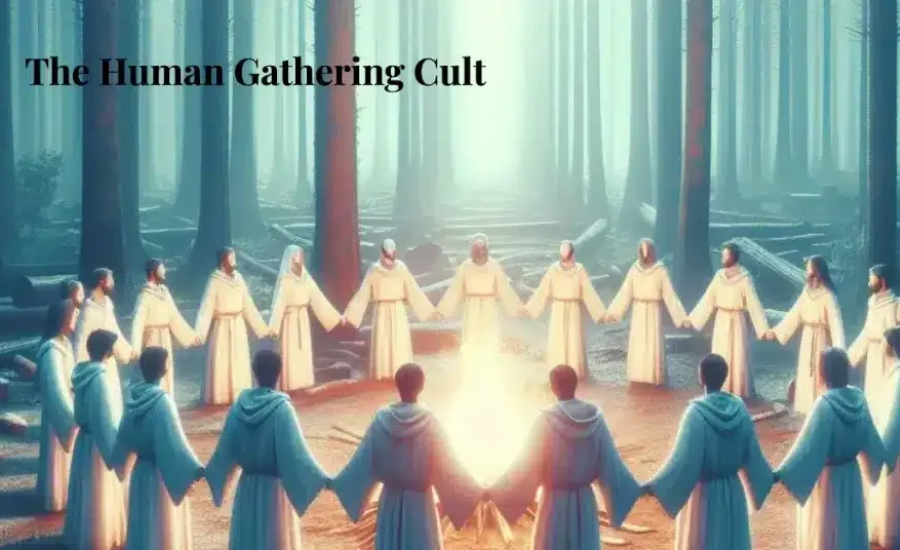
1. Application and Selection Process
Prospective members typically apply to join The Human Gathering Cult after attending introductory workshops or events. The cult may employ a selection process to assess alignment with its values and goals, ensuring a cohesive community.
2. Initiation Rituals
New members undergo initiation rituals that symbolize their dedication to the cult’s principles. These rituals often include symbolic acts or ceremonies that mark a spiritual rebirth or transformation, solidifying their commitment.
3. Community Integration
Upon initiation, members integrate into the communal living environment of The Human Gathering. They share resources, responsibilities, and experiences with fellow members, fostering a strong sense of unity and connection within the community.
4. Training and Education
Members receive comprehensive training and education in the cult’s teachings. This includes instruction in spiritual practices, personal development techniques, and skills necessary for communal living, promoting holistic growth and development.
5. Commitment and Participation
Membership in The Human Gathering Cult entails a commitment to actively participate in group activities, rituals, and events. Regular engagement is encouraged to deepen spiritual understanding and strengthen bonds within the community.
6. Roles and Responsibilities
Members often assume specific roles and responsibilities within the community, contributing to its functioning and growth. These roles may range from leadership positions to tasks essential for maintaining the cult’s communal lifestyle and organizational structure.
Technology’s Impact On Cult Dynamics
1. Rise of Online Cults and Digital Communities
Advancements in technology have led to the emergence of online communities and digital cults, leveraging social media platforms and online forums for recruitment, radicalization, and indoctrination.
2. Echo Chambers and Information Isolation
Social media algorithms contribute to the formation of echo chambers and information bubbles within online cults, reinforcing existing beliefs and isolating members from diverse viewpoints, which can intensify group polarization and radicalization.
3. Digital Connectivity and Disconnection
While enhancing connectivity, technology also introduces challenges such as digital disconnection and depersonalization. Online cults exploit digital anonymity to manipulate and control members remotely, blurring the lines between virtual interactions and real-world consequences.
Realities Within The Human Gathering
1. Diverse Experiences and Ideologies
The Human Gathering embraces a variety of experiences, formats, and ideologies that cater to diverse participant interests and goals, spanning spiritual awakening, professional development, and social activism.
2. Personal Accountability and Engagement
Participants play a pivotal role in the success of the Human Gathering through active engagement, personal reflection, and the application of insights gained, emphasizing individual responsibility for personal growth and transformation.
Benefits The Human Gathering
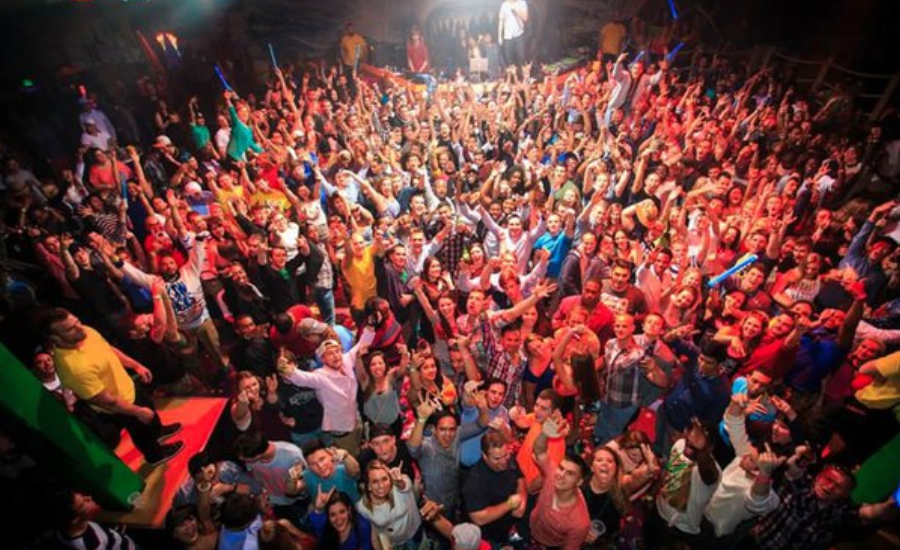
Joining The Human Gathering offers significant advantages across three key areas:
- Access to a Strong Network: Members gain access to a diverse network of people and resources that can significantly accelerate their progress towards personal and professional goals. This network provides valuable connections and support, enhancing opportunities for success that might be more challenging to achieve independently.
- Authentic Friendships: The Human Gathering carefully selects members based on their honesty and kindness, creating a community of like-minded individuals who welcome diverse perspectives, backgrounds, and interests. This inclusive environment fosters genuine, enduring friendships that enrich members’ lives and provide meaningful support.
- Impactful Change: Every member of The Human Gathering shares a common goal: to contribute positively to society and address pressing issues such as human trafficking, civil rights, homelessness, and more. By collaborating within the network, members leverage their collective resources and efforts to make a substantial and lasting impact on these critical challenges.
In essence, The Human Gathering not only facilitates professional networking but also cultivates deep personal connections and empowers its members to effect meaningful change in the world.
Controversies And Criticisms
1. Definitions and Misconceptions
The term “cult” often carries negative connotations, leading to misunderstandings. It’s crucial to differentiate between New Religious Movements (NRMs), which may be unconventional or newly formed groups and harmful cults that exhibit exploitative or manipulative behaviors.
2. Media Portrayal
Media tends to sensationalize cult activities, focusing on extreme behaviors and incidents. This can create a biased perception that all cults are inherently dangerous or deviant, overshadowing nuanced understandings.
3. Sociological Perspective
From a sociological viewpoint, cults exist along a spectrum of religious and cultural expressions. Many mainstream religions began as small, unconventional groups. Understanding this context helps discern between harmful practices and legitimate religious diversity.
Ethical Concerns
- Manipulation: Certain cults manipulate members through psychological techniques like love bombing and isolation, eroding personal autonomy and critical thinking skills.
- Financial Exploitation: Leaders of some cults exploit members financially, demanding substantial donations or unpaid labor, causing financial strain for individuals and families.
- Abuse and Coercion: Documented cases reveal instances of physical, emotional, and sexual abuse within certain cults, facilitated by power dynamics and isolation.
Legal Challenges
- Legal Status: Cults often operate in legal gray areas, particularly in jurisdictions with robust religious freedoms, complicating efforts to define illegal activities.
- Prosecution Difficulties: Bringing cult leaders to justice for crimes can be challenging due to the insular nature of these groups and members’ reluctance to testify.
- Regulatory Responses: Governments face challenges balancing individual freedoms with preventing exploitation and abuse within cults, resulting in diverse regulatory approaches and effectiveness worldwide.
The Future Path Of The Human Gathering Cult

- Adaptation and Evolution: Anticipating how the cult might update its teachings, rituals, and communal structures to remain relevant in evolving times.
- Leadership Dynamics: Considering the impact of future leadership changes on the cult’s direction and continuity, emphasizing succession planning and effective leadership transitions.
- Membership Trends: Exploring the implications of recruitment efforts and retention rates on the cult’s sustainability and growth trajectory.
- Public Perception and Transparency: Addressing ongoing public scrutiny and media attention to manage reputation and ensure operational transparency.
- Legal and Regulatory Landscape: Assessing potential impacts of changes in legal frameworks on the cult’s operations and freedoms.
- Internal Cohesion and Ethics: Evaluating the role of member cohesion, leadership integrity, and ethical standards in maintaining stability and trust.
- Cultural and Spiritual Relevance: Adapting to broader cultural and spiritual trends to sustain appeal and resonate with evolving societal needs.
- Global Context and Resilience: Considering external factors such as economic shifts or societal challenges in navigating future uncertainties and fostering resilience.
Wrapping UP
The concept of the “Human Gathering Cult” revolves around creating a supportive community focused on authentic connections, personal development, and collective action. It stands apart from conventional networking groups by emphasizing sincerity, kindness, and a shared commitment to societal improvement. Founded on principles of inclusivity and mutual respect, it offers members a platform where success is intertwined with meaningful relationships and a dedication to addressing global challenges.
Membership in the Human Gathering provides access to a diverse network of resources and opportunities for personal and professional growth. Members are selected for their honesty and kindness, fostering genuine friendships that transcend political differences and backgrounds. Together, they collaborate on initiatives tackling issues like human trafficking and homelessness, aiming to make a positive impact on society. While the community promotes constructive engagement, lessons from past cult tragedies serve as a reminder to maintain ethical leadership, transparency, and individual autonomy to safeguard against potential risks associated with cult-like behaviors.
People Also Ask (FAQs)
1. What is the group The Human Gathering?
The Human Gathering is a carefully curated community offering a personalized and enriching experience for every member. Emphasizing intimacy and genuine human interaction, The Human Gathering fosters an environment conducive to meaningful connections and collaborative engagement.
2. What is the largest human gathering in the world?
Some of the largest human gatherings in history include:
- Ardh Kumbh Mela on 4 February 2019 with 50 million participants
- Maha Kumbh Mela on 10 February 2013 with 30 million participants
- Arba’een Pilgrimage in 2017 with 30 million participants
- Arba’een Pilgrimage in 2015 with 27 million participants
3. What are the benefits of The Human Gathering?
The Human Gathering offers its members:
- Access to a robust infrastructure of systems and resources tailored to maximize membership benefits and connections.
- Services are designed to save time, increase membership return on investment (ROI), and facilitate diverse, genuine, and meaningful human connections.
Stay tuned for more updates and alerts visit: The News!

